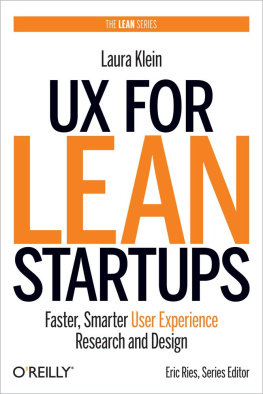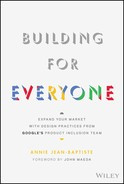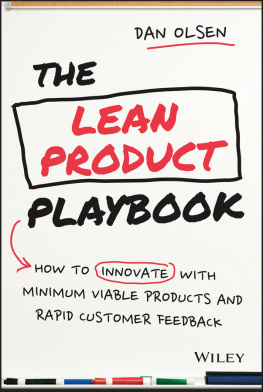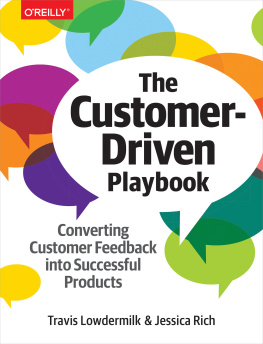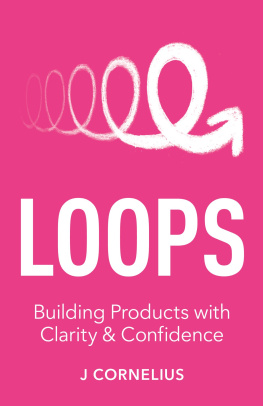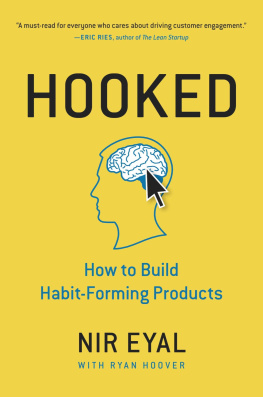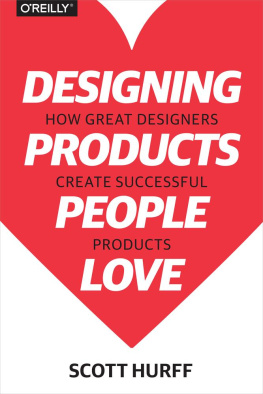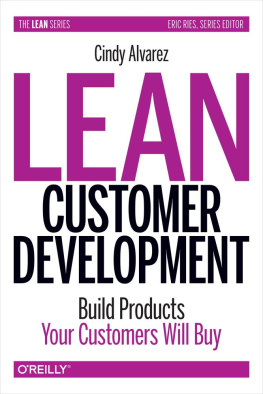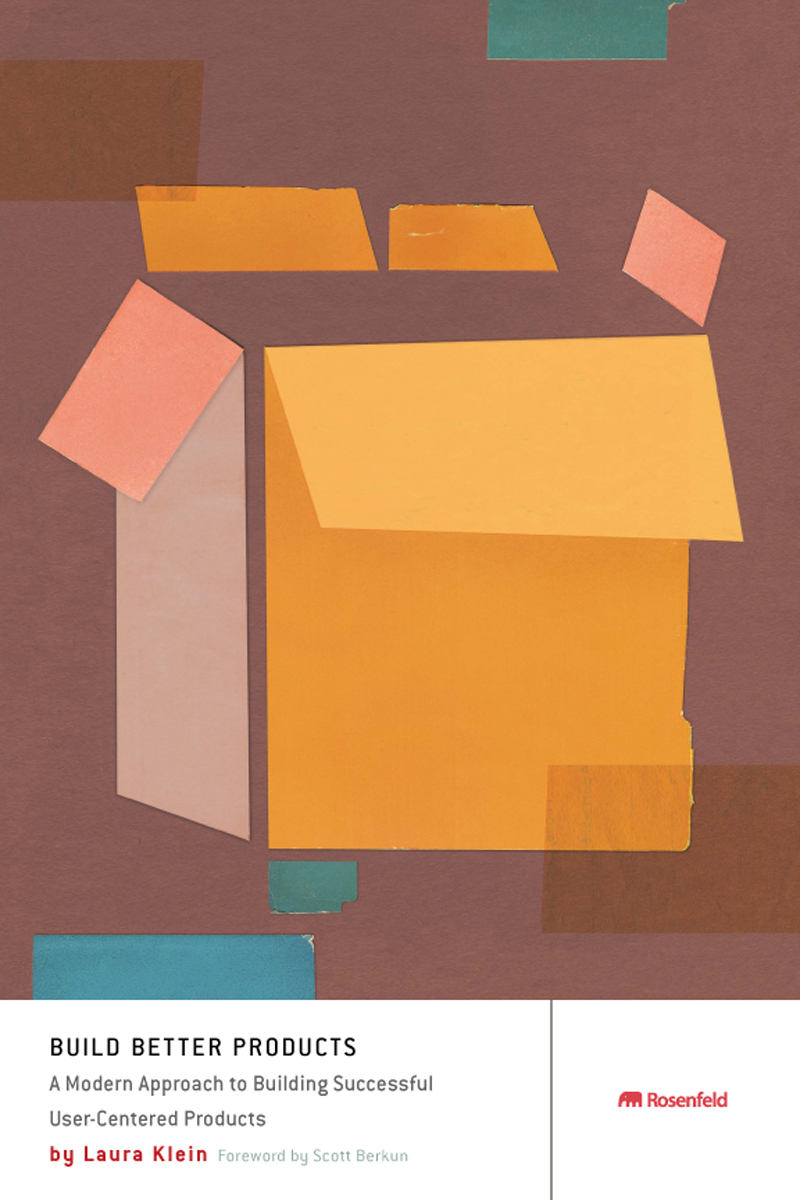Contents
BUILD BETTER PRODUCTS
A MODERN APPROACH TO BUILDING SUCCESSFUL USER-CENTERED PRODUCTS
Laura Klein
Build Better Products
A Modern Approach to Building
Successful User-Centered Products
By Laura Klein
Rosenfeld Media, LLC
457 Third Street, #4R
Brooklyn, NY
11215 USA
On the Web: www.rosenfeldmedia.com
Please send errors to:
Publisher: Lou Rosenfeld
Managing Editor: Marta Justak
Illustrations: Kate Rutter
Interior Layout Tech: Danielle Foster
Cover Design: The Heads of State
Indexer: Sharon Shock
Proofreader: Sue Boshers
@2016 Laura Klein
All Rights Reserved
ISBN: 1-933820-58-6
ISBN 13: 978-1-933820-58-3
LCCN: 2016952412
Printed and Bound in the United States of America
HOW TO USE THIS BOOK
I was going to be snarky and point out that the way to use this book is to read it, because it is a book, and that is generally what one does with books. Then I realized that wasnt quite true, in this case.
I mean, yes, you should read it, but you should also stop reading it occasionally and do the exercises in each chapter. The process only works if you do the exercises.
The exercises were developed over the course of several years working with and coaching teams that were struggling to build and improve products. If youre building products, the exercises will help you answer some of the questions youre probably trying to answer.
But dont just do them while youre reading. These exercises were not designed to be performed once and then forgotten. Theyre templates that you can use over and over again. Theyre patterns you should weave into your development process. Theyre simple frameworks for thinking about how to build better products.
So, in summary, do read the book. Do stop reading the book and do the exercises. Do keep the book around (preferably in some prominent place on your desk where all of your coworkers will see it, become terribly jealous, and rush out to buy their own copies) so that you can refer back to the exercises as they become relevant to where you are in the development process. Do come up with variations on the exercises and write to tell me about what you changed and why at .
Do not wear this book as a hat.
Who Should Read This Book?
This book is for people building products. Many of the examples in the book are of digital products, but most of its applicable whether youre building mobile apps or enterprise productivity products or connected cars or disruptive toasters.
Many of the exercises in this book are designed for teams to use together, and they work better if you include other people who are working on your product. This is intentional. The book was written for people who make product decisions, but the fact is that everybody on your team is making product decisions every dayproduct managers, designers, marketers, salespeople, engineers. Even the lawyers. Sometimes, especially the lawyers. Get them involved.
This book isnt specifically for entrepreneurs or for people at large companies. Ive used these techniques successfully with teams at companies of all sizes. The only requirement is that you are working on a product and that you are making some decisions about what youre building.
What Comes with This Book?
This books companion website ( www.usersknow.com/buildbetterproducts ) contains additional content and templates.
FOREWORD
No one makes bad products on purpose, and yet we have so many of them in our lives. There are certainly plenty of fancy books with copious advice on how to do it right, but somehow they have little impact on the world. Much of the problem is the faith that authors have that there is a magic way to do things, and all we need to do is describe the magic. But product teams and software projects are magic resistant. They require something more to improve how they function.
The good news isthe book you have in your hands right now! It sheds the pretense so common in books on design and product management, instead favoring clear advice, straightforward lessons, and exercises you can do easily with your team. Laura Klein has wisely put the focus on you and your world, and she sets up her lessons in a fashion that makes them simple to apply. The star of every chapter is an exercise, and this is no accident. These techniques spark conversation, insights, and improved understandingthree powerful forces to have on your side. The sooner you start to apply her wisdom to your situation, the faster your ability to build better products will rise.
Scott Berkun
Author, Making Things Happen
INTRODUCTION
What is a better product? This is not a semantic question. Its not a hypothetical one either. Its a serious question about how we define improvement.
Let me start with a story that may sound familiar. I was talking with a company, which shall remain nameless. The company wanted to improve its corporate website. The site allowed visitors to sign up for free trials, make purchases of new seat licenses, and all the other sorts of things you might expect from a large enterprise company that sells software as a service (SaaS) to other businesses.
The site hadnt been updated in awhile, but not for lack of trying. Theyd made two or three attempts over the course of as many years, going so far as to hire outside agencies to conduct a redesign. But somehow, while their efforts had generated a lot of Photoshop files and some spectacularly large bills, there had never been a user-facing change.
Finally, on the fourth try, they succeeded in jumping through all the hoops necessary to finish the project. The new design cost over a million dollars (and I am not making this number up). That was just the design. That number didnt cover the cost of implementation or internal management or changing any of the marketing material to match. It didnt cover anything other than some Photoshop files. It also didnt cover the costs of the previous three redesign attempts. The final cost of the project was several million dollars.
So, what did all that money buy the company? Well, it bought them a redesigned website. Thats what they wanted, so the project was successful, right? The website was better!
To be clear, the new website didnt help the company do more of what they really wanted to do. It didnt sell any more products. It didnt convert more free trial users into seat license holders. It didnt make current customers any happier or reduce customer service costs noticeably.
What, tactically speaking, was better about it? Nothing, really.
This story is not unique to this company or to website redesigns. This story is universal. Ive seen it happen with redesigns, big features, branding improvements, and new product releases. An enormous amount of time and money is spent in the quest for better, but too often that time and money doesnt translate into anything tangible for the company.
Its important to understand that for something to be better than it was, you need to know what better means. When we talk about creating better products, were not necessarily talking about things that win industry awards. At least, were not talking exclusively about those sorts of things. Better products


